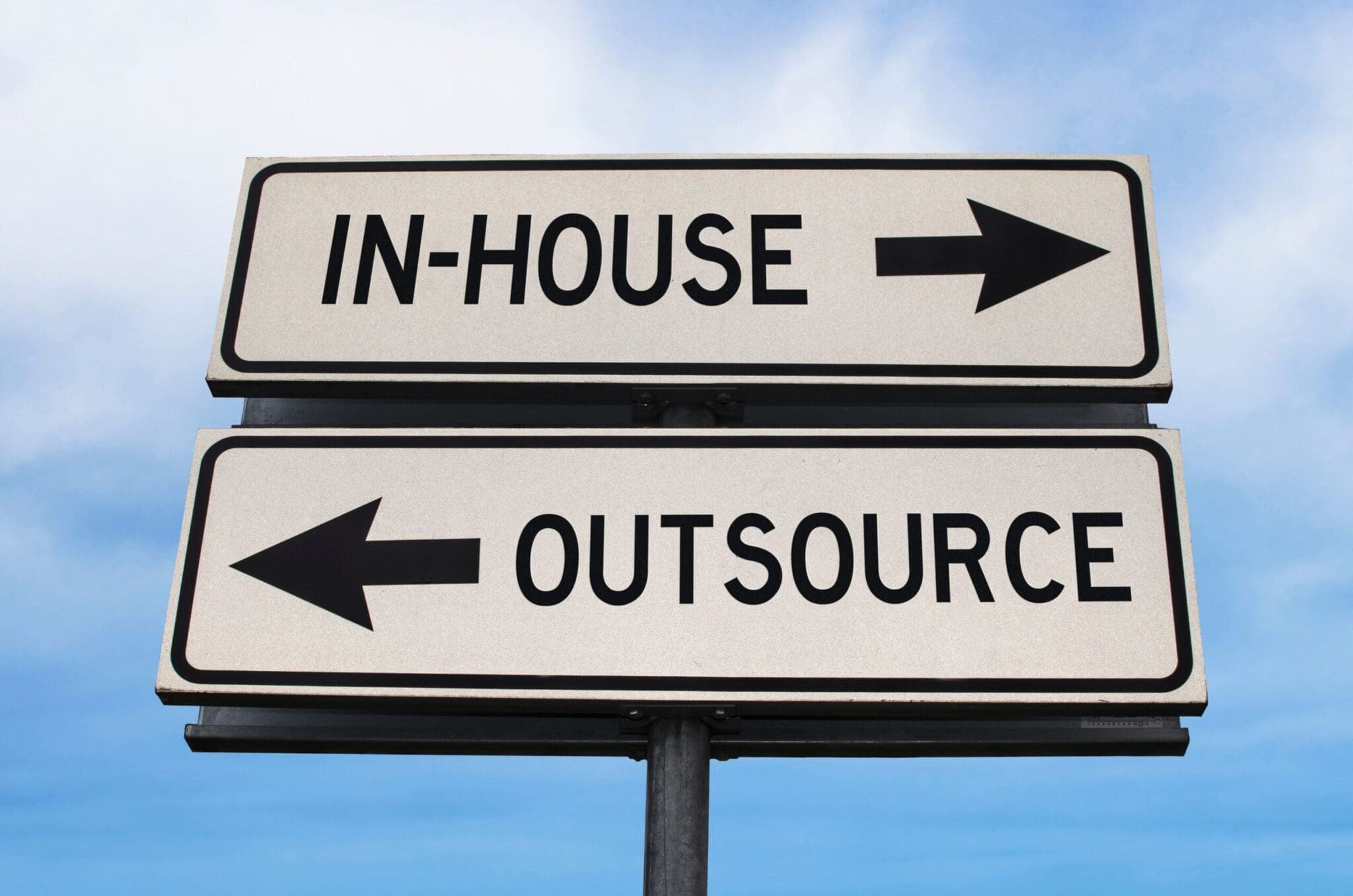The Growing Complexity of Supply Chain Management
Supply chain management is more complex than ever, with businesses facing increasing challenges due to geopolitical tensions, evolving regulations, governance requirements, and rising customer expectations. As global supply chains become more interconnected, companies must navigate compliance risks, supplier due diligence, and operational efficiency while maintaining business resilience.
Many organizations struggle with outdated supply chain management services. They often divert significant IT budgets to maintain legacy systems instead of investing in scalable, data-driven solutions. At the same time, supply chain due diligence regulations require businesses to continuously track supplier financial stability, cybersecurity, sustainability policies, and risk exposure. This makes compliance a constant challenge.
Organizations must determine whether to manage their supply chains internally or use the expertise of supply chain consulting firms and third-party supply chain management providers. Outsourcing supply chain management can provide businesses with access to advanced analytics, automation, and compliance expertise. This reduces risk and improves supply chain visibility.
This article will explore the key considerations in choosing between in-house supply chain management and outsourcing supply chain management, helping businesses optimize their operations for efficiency, risk mitigation, and long-term success.
The Challenges of In-House Supply Chain Management
On the surface, supply chain management may seem like a straightforward process but in reality, it is increasingly complex. With geopolitical tensions, stricter regulations, heightened governance, and evolving customer expectations, businesses are under more pressure to ensure supply chain transparency and compliance.
For companies managing supply chain management services internally, the challenges include:
- Sourcing & Supplier Due Diligence – Finding and assessing the right suppliers is resource intensive. It requires businesses to evaluate health and safety, financial stability, ESG performance, cybersecurity risks, and regulatory compliance.
- Data Overload & Verification – Gathering supplier data from different regions, in multiple languages and formats, is difficult. Ensuring this data is accurate, up to date, and meets due diligence requirements adds another layer of complexity.
- Regulatory Compliance & Risk Management – As governments introduce stricter supply chain due diligence regulations, companies must constantly track supplier performance, emerging risks, and legal obligations. This is often without the right tools.
- Manual & Inefficient Processes – Many companies still rely on spreadsheets and fragmented systems to manage supplier risk. This leads to inefficiencies and compliance gaps.
- Scaling & Adapting to Change – As businesses grow, managing an increasingly complex supply chain becomes unsustainable without automated processes and expert guidance.
These challenges create operational inefficiencies, increase risk exposure, and make it difficult to scale supply chain operations effectively.
Key Considerations When Deciding Between In-House and Outsourcing
When evaluating whether to manage supply chain management services in-house or work with supply chain consulting firms, businesses need to weigh several factors:
1. Risk Exposure & Compliance Obligations
Regulations such as the EU Supply Chain Due Diligence Directive and the UK Procurement Act 2023 require businesses to monitor supplier compliance continuously.
Companies must ask:
- Do we have the internal expertise to track global regulatory changes and ensure compliance?
- Can we continuously monitor suppliers for ESG, financial, and cybersecurity risks?
- What are the penalties if we fail to meet due diligence requirements?
2. Cost Efficiency & ROI
Outsourcing is often perceived as an additional expense, but businesses must consider:
- What is the true cost of maintaining an in-house procurement and compliance team?
- How much are we spending on supplier assessments, audits, and data verification?
- Could outsourcing supply chain management reduce administrative burdens and free up internal resources for strategic initiatives?
3. Data Management & Visibility
Third-party supply chain management providers use advanced technology to centralize supplier data, ensuring visibility across the entire supply chain.
Companies should assess:
- Are we still relying on spreadsheets and manual data collection?
- How do we ensure that supplier information is accurate, validated, and accessible across departments?
- Can we generate audit-ready compliance reports quickly and efficiently?
4. Agility & Scalability
With supply chains evolving rapidly due to market disruptions, supplier shortages, and regulatory updates, flexibility is key.
Businesses should ask:
- How quickly can we onboard new suppliers or respond to market disruptions?
- Do we have the technology and expertise to adapt to changing compliance requirements?
- Would an outsourced solution allow us to scale operations more efficiently?
By considering these factors, businesses can determine whether managing supply chain risk in-house is feasible or if outsourcing supply chain management to specialist providers like Achilles would provide a more strategic and scalable solution.
How Outsourcing Supply Chain Management Provides a Solution
For many businesses, the challenges of in-house supply chain management make it difficult to scale operations while minimizing risk. This is where outsourcing supply chain management to third-party supply chain management providers like Achilles can provide a more efficient, cost-effective, and compliant solution.
1. Centralized, Accurate Supplier Data
One of the biggest pain points in supply chain management is collecting, verifying, and maintaining accurate supplier data. Many companies rely on outdated systems or manual processes that create gaps in visibility and compliance risks.
With Achilles’ supply chain management services, businesses gain access to a centralized platform where:
- Supplier data is continuously validated for accuracy and compliance.
- Risk insights are automated to highlight high-risk suppliers.
- Compliance reporting is streamlined, reducing time spent on audits and regulatory filings
Learn more about The Achilles Platform
2. Simplified Regulatory Compliance & Risk Management
Regulatory compliance is an ever-evolving challenge, with new supply chain due diligence laws placing increased responsibilities on businesses. Failure to comply can lead to fines, reputational damage, and supplier disruptions.
Achilles helps businesses:
- Stay ahead of global regulations, including EU and UK supply chain due diligence laws.
- Continuously monitor supplier compliance, ensuring risks are proactively managed.
- Automate audit-ready reporting, reducing manual work for procurement and compliance teams.
Explore our Supply Chain Risk Management Solutions
3. Faster, More Effective Supplier Sourcing
Finding the right suppliers to meet business needs while ensuring they are financially stable, compliant, and aligned with sustainability goals can be time-consuming and costly.
Achilles provides:
- A pre-qualified global network of 200,000+ vetted suppliers.
- Faster supplier onboarding with due diligence checks built-in.
- Improved risk insights to prevent sourcing from non-compliant suppliers.
Learn about our pre qualified supplier network
4. Freeing Up Internal Resources for Core Business Priorities
Managing supply chain risk, data verification, and regulatory reporting in-house often requires entire teams dedicated to manual processes. Outsourcing these tasks to companies like Achilles allows businesses to:
- Reduce administrative burdens, allowing procurement teams to focus on strategic sourcing.
- Streamline reporting, cutting down the time spent on compliance tasks.
- Ensure resilience, with Achilles acting as an extension of your internal team to proactively manage risk.
By outsourcing to third-party supply chain management experts like Achilles, businesses gain a more scalable, compliant, and data-driven approach to supply chain risk management.
Achieve Supply Chain Confidence with Achilles
At Achilles, we work across your supply chain, reaching into the areas that you cannot, helping you identify risks, maintain compliance, and improve supply chain efficiency.
Let Achilles be an extension of your team. Book a no-obligation consultation today to explore how we can support your supply chain risk management goals.





